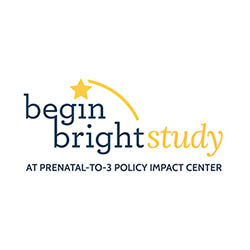What level of resources does a single parent with an infant and a toddler have to provide for their children in your state? How much do they have left of their earnings from their minimum wage job after they pay for child care? Are they able to access the state and federal benefits that they are eligible for and how much do these benefits help their bottom line? Do they fare better in a nearby state?
The Same Family, Different Resources simulation brings the Prenatal-to-3 State Policy Roadmap to life and compares the level of resources available to a family of three based on each state’s actual policy choices. This unique analysis clearly illustrates that there is substantial variation in available resources during the critical prenatal to age 3 period, based on state policy choices. A state’s policy choices do not operate in isolation from one another. Instead, they interact to create a system of support of varying generosity for parents and children. Tax credits and near-cash supports, such as SNAP, provide valuable resources to families. However, state minimum wage policies and child care subsidy policies are significant drivers of the variation across states in the amount of resources a working parent has available to support their family.
We simulate the level of resources available annually to a single parent with an infant and toddler, who works full time at a minimum wage job, and who uses a subsidy to leave their two children in center-based child care. Our calculations begin with the total annual earnings at the state minimum wage. We subtract the family’s out-of-pocket costs for child care (child care that charges the equal access target rate, which is the 75th percentile of the state’s market rate survey). The family’s out-of-pocket costs include any required copayment, plus additional fees if the state’s child care subsidy reimbursement rate is less than the price of care at the equal access target. We then add the resources a family would expect to receive from nutrition benefits (SNAP and WIC) and state and federal earned income and child tax credits.
The figures below illustrate how the level of resources available to a stylized family varies across states. We also highlight how the level of resources available varies across states based on two other important state policy choices—Medicaid expansion and a paid family leave program of at least 6 weeks. Finally, we rank states by the total resources available to our family of three, including showing total resources adjusted for cost of living.
WHAT DID WE FIND IN 2022? State policy choices interact to create a system of support for parents and children. When we combine the Roadmap policies and strategies for each state, we see that the level of resources a family has available to meet their basic needs varies substantially, from over $46,000 per year in the District of Columbia, to less than $23,000 in Georgia.
HOW DOES YOUR STATE MEASURE UP?
The interactive graphics below demonstrate:
- How specific policy choices impact a family’s total resources;
- The variation in the level of resources available across states based on two other important state policy choices – Medicaid expansion and a paid family leave program of at least 6 weeks; and
- Total resources available to a family by state based on policy choices, including cost-of-living adjusted resources.
HOW TO USE: Hover over the bar charts to see to see your state’s data. In the third graphic, click on the gray tabs to view both total resources and total resources adjusted for cost of living. To download graphics, hover cursor anywhere over the graphic and click on the 3 dots in the top right corner. For additional information on Same Family, Different Resources calculations, see Methods and Sources.



